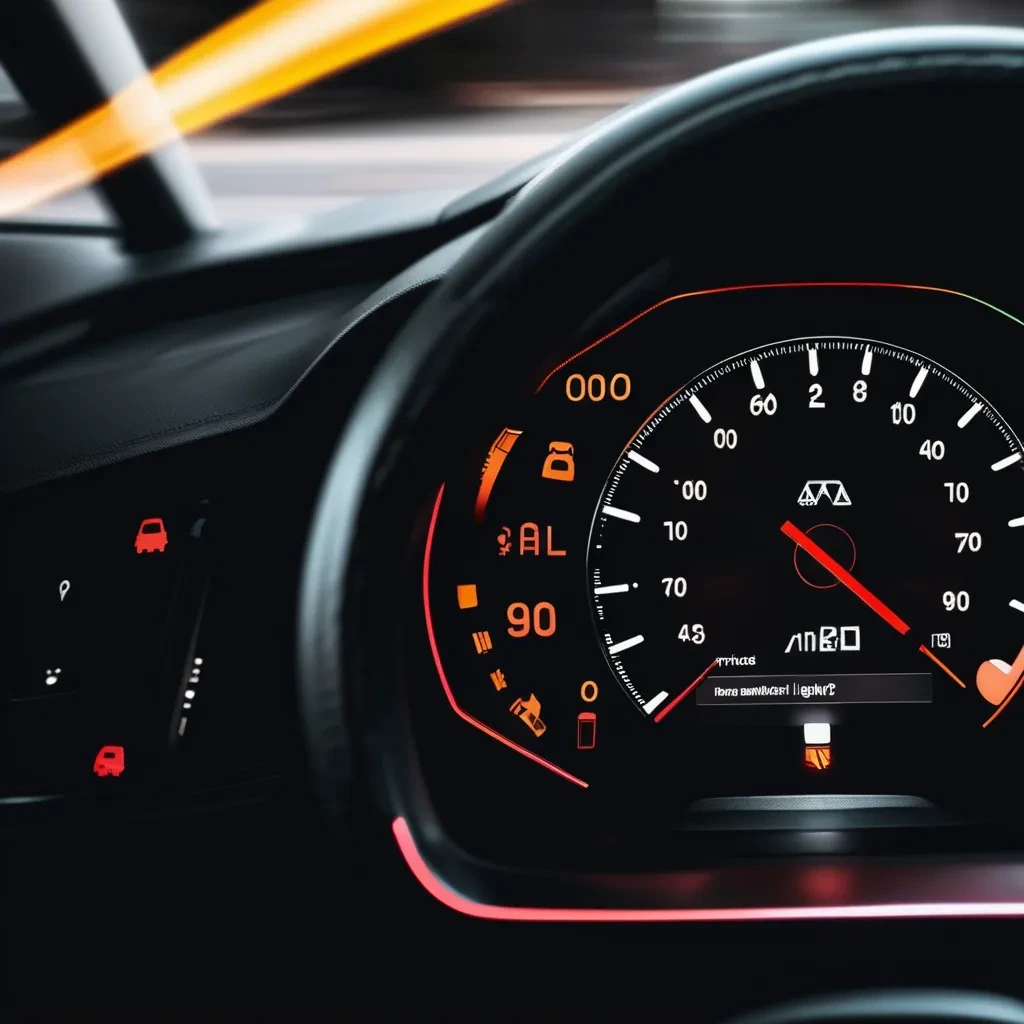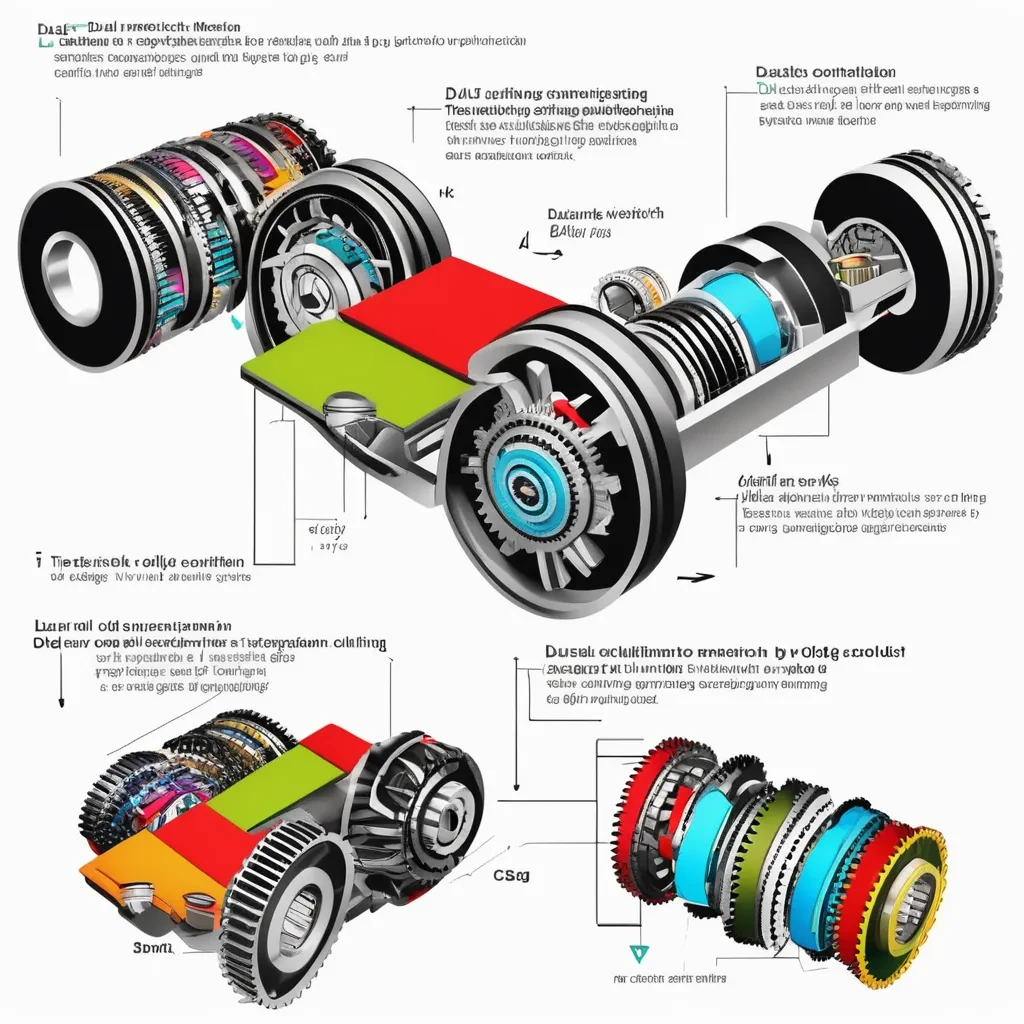The Audi S4, a high-performance sports sedan, is known for its precision engineering and driving experience. However, like any other vehicle, it may occasionally face mechanical issues.
One of the more serious issues that Audi S4 owners may encounter is a gearbox malfunction. This can be a worrying problem, leaving drivers to wonder if they can continue driving or if they should stop immediately.
If your Audi S4’s gearbox malfunctions, avoid driving. If the malfunction is minor, you may drive a short distance, but it’s safer to stop and have it checked to prevent further damage.
In this article, we will explore the causes, symptoms, and potential solutions to gearbox malfunctions in the Audi S4. Additionally, we will answer the critical question: Is it safe to continue driving when faced with this issue?
For more details about Audi, begin your information search with Carsdensity.
Table of Contents:
What is a Gearbox Malfunction?
The gearbox is an essential component in a vehicle that transfers power from the engine to the wheels. In modern cars like the Audi S4, the gearbox (also called the transmission) ensures smooth gear shifts and optimal engine performance.

A gearbox malfunction occurs when the system is unable to operate as intended, leading to problems ranging from rough gear changes to complete transmission failure.
Symptoms of Audi Automatic Transmission Issues
Common signs of Audi automatic transmission problems include the following:
- Transmission not shifting
- Stuck in limp mode
- Hard or delayed gear shifts
- Tiptronic mode not engaging
- Unable to shift into reverse
- Stuck in park
- Won’t engage into gear
- Gear engages, but the car won’t move

Read Also: Audi Drive Select For Snow – Optimizing Performance in Winter Conditions!
Common Problems with Audi Gearboxes
One of the most frequent complaints is difficulty shifting gears, which can include slipping, rough, or delayed shifts. Other problems include:
Transmission Control Module (TCM) Issues: The malfunction indicator light can turn on due to TCM failure, often caused by low fluid levels.
Clutch and Torque Converter Wear: Lurching, slipping, or worn-out clutch and torque converters are common issues that can often be managed with regular maintenance.
Transmission Replacement: In severe cases, a full transmission replacement might be required.
Mechatronic Unit Failure:
Mechatronic unit failure, especially in dual-clutch (S-Tronic) transmissions, is a common issue. This happens due to electronic faults, leading to loss of gear-shifting ability.

Solenoid Valve Problems:
Solenoid valves control gear shifts, and when they fail, it can cause slipping, gear-shifting difficulties, or trigger limp mode in the transmission.
Read Also: Audi Q3 Fuel Type – A Deep Dive!
Clutch Wear:
A worn clutch can result in slipping, vibrations, and trouble shifting gears. This problem is more typical in older, high-mileage vehicles.
Software Errors:
Software glitches can cause transmission malfunctions, including shifting problems, gearbox control unit failure, and Transmission Control Module (TCM) errors.
Wiring Issues:
Wiring faults may lead to gear selection problems, slipping, or put the transmission into limp mode.
These are the common issues with Audi gearboxes. An ASE-certified mechanic can diagnose and fix these problems efficiently.
Read Also: Audi Turns Off When Parked – Detail Guide!
DSG Transmission Problems Explained
The Audi DSG, an automated manual transmission, features a dual-clutch system developed by Volkswagen. Two internal clutches control the odd- and even-numbered gearsets, allowing smooth, sequential gear shifts without interrupting torque delivery.

A Transmission Control Unit (TCU) manages clutch engagement and gear changes, completing multiple shifts in mere milliseconds. This technology improves acceleration, fuel economy, and shift quality, offering better performance than traditional manual or automatic transmissions.
Audi models with DSG require specialised tools and expertise for proper maintenance.
Read Also: Audi Turns Off When Parked – Detail Guide!
Transmission Problems by Symptoms
Judder and Loud Bang When Shifting from Neutral to Gear:
Mid-2000s Audi models with Tiptronic transmissions may experience a judder when shifting from Neutral into Drive or Reverse, often accompanied by a loud thump. This typically triggers a P0706 trouble code and lights up the check engine indicator.

Possible Causes: Water or dirt entering the transmission range sensor connector can cause corrosion and signal distortion. Clean the connector and ensure it’s sealed. If the sensor is faulty, replacement is the only fix.
Clutch Slip and RPM Oscillations in 4th and 5th Gear:
At highway speeds, Tiptronic-equipped Audis may exhibit RPM fluctuations, with the engine speed oscillating by a few hundred RPMs. A P0741 code is often stored, and the check engine light will illuminate.
Possible Causes: Issues could stem from a faulty torque converter, solenoid valve, wiring, or connector. Testing and replacing damaged components may resolve the issue.
Read Also: What does inspection due mean on Audi? – A Deep Dive!
Grinding or Rattling Noise While Driving:
Some Tiptronic Audi vehicles may produce a grinding noise in drive mode, often more noticeable when cold and directly tied to engine speed.
Possible Causes: Worn or damaged needle bearings in the torque converter may be the culprit. Low or old transmission fluid may also contribute, so checking and replacing the fluid could help.
PRNDS Symbol Flashing, Car Won’t Engage Gears:
Audi Multitronic transmissions may display the PRNDS symbol on the dashboard and refuse to engage any gear. Restarting the vehicle may temporarily resolve the issue.

Possible Causes: Low or degraded transmission fluid, clogged filters, faulty oil pumps, or a failing TCU could be the source. Specialised diagnostic tools are necessary to assess and repair these issues.
Hesitation and Gear Hunting During Acceleration:
Many Audis with Multitronic transmissions (especially models before 2005) suffer from hesitation when accelerating, often accompanied by gear hunting and slippage.
Possible Causes: This may be due to worn clutch packs or outdated TCU software. Updating the software or replacing the clutch packs with upgraded kits could address the problem.
Read Also: How Many Miles Does Audi Q5 Last? – The Latest on Vehicle Lifespan!
Transmission Malfunction, No Reverse, You Can Continue Driving
If your Audi’s transmission malfunctions and won’t go into reverse, it may be caused by:
- Failed Reverse Gear: A physical failure of the reverse gear inside the transmission.
- Solenoid Failure: The solenoid responsible for shifting into reverse may have failed.
- Transmission Control Module Issues: The TCU may malfunction, preventing reverse engagement.
- Fluid Issues: Contaminated or low fluid levels can affect reverse function.
- Mechanical Wear: Over time, wear and tear on transmission components may cause reverse gear failure.

DSG Transmission Limp Mode
When the DSG transmission goes limp, the vehicle becomes stuck in third gear, with the ‘PRNDS’ symbol flashing on the dashboard. Stored codes will point to the underlying issue.
Possible Causes: Limp mode can result from worn clutch components, sensor failures (such as temperature sensors), or a failed mechatronic unit. Resetting the gearbox using diagnostic tools may help, but replacement may be necessary.
Read Also: Audi vin decoder options list – Comprehensive Visual Guide!
Reset Transmission Adaptation
To reset your Audi’s transmission adaptation:
- Turn on the ignition without starting the engine.
- Press and hold the accelerator for 10 seconds.
- Turn off the ignition and let off the accelerator.
- Remove the key from the ignition.
- Press and hold the accelerator for another 10 seconds.
- Release the accelerator.
- Turn on the key and let the engine start.
- This procedure can help recalibrate the transmission’s adaptive settings.
Checking the Transmission Fluid Level
One of the most frequent causes of transmission issues in Audi vehicles is low transmission fluid, leading to problems such as no shifting, delayed or erratic shifts, and shifting at higher RPMs. If your Audi starts to experience symptoms of transmission issues, such as rough or erratic shifting, it’s likely due to low transmission fluid.
Follow these steps to check the transmission fluid level:
- Ensure the vehicle is on level ground, and the engine is running.
- Locate the transmission dipstick, typically positioned at the front of the engine bay.
- Re-insert the dipstick and pull it out to check the fluid level.
- The fluid level should fall between the minimum and maximum marks on the dipstick.
- If the fluid is low, add the correct type through the dipstick tube, but be careful not to overfill.
- Repeat steps 3-5 to ensure the fluid level is now within the appropriate range.
Important: Always use the correct transmission fluid for your specific Audi model, as stated in the owner’s manual or advised by a certified Audi technician. It is also advisable to check the fluid when the transmission is at its operating temperature.
Read Also: Audi A4 Rattle When Accelerating – Causes, Diagnosis, and Solutions!
Recalls and Technical Service Bulletins (TSBs)
Several recalls and technical service bulletins (TSBs) have been issued regarding Audi transmissions, particularly those involving automatic shifting problems, DSG failures, and transmission power losses.
For detailed information about these recalls or TSBs for your vehicle’s make, model, and year, consult Audi’s official website or contact a local dealership.
Reading Transmission Fault Codes
The next step in diagnosing transmission issues is to read fault codes from the Transmission Control Module (TCM). These specialised codes cannot be accessed using a standard OBD-II scanner. For this, you’ll need an Audi VW-specific transmission scanner.
Here’s how to read and clear codes from the transmission module:
- Locate the OBD-II port under the dashboard and connect your scanner.
- Turn on the ignition, but don’t start the engine.
- From the main menu, select Audi and your specific model.
- Navigate to “Control Units.”
- Select “Drivetrain,” then choose “Transmission.”
- Finally, select “Read Fault Codes.”
Read Also: Audi q8 throttle lag fix – Don’t take a risk!
Which Audi Models Are Prone to This Fault?
Certain Audi models are more likely to experience transmission issues. These include:
- 2010-2014 Audi A7
- 2010-2014 Audi S4
- 2010-2014 Audi S5
- 2010-2014 Audi S6
- 2010-2014 Audi S7
- 2010-2014 Audi RS5
- 2011-2014 Audi A6
- 2011-2014 Audi A4
- Audi Q5
- Audi Q7
- Audi TT
What Does the inscription “Audi Transmission Malfunction ‘You Can Continue Driving'” imply?”
When this message appears on your Audi’s dashboard, it indicates that the transmission is not functioning at its best. As a result, you may encounter problems like extended shifting times, rough gear changes, or delayed acceleration.
The Transmission Control Unit (TCU), which manages the transmission system, regularly runs diagnostics to ensure proper functioning. If it detects an issue, the “Audi Transmission Malfunction” message will be displayed.
The meaning of this warning can vary depending on the specific transmission issue your car is experiencing.
Read Also: Does Valvoline do Audi oil Changes? – A Deep Dive!
What Causes This Error?
Several factors can trigger a transmission malfunction. The most common causes are:
- Transmission overheating
- Low transmission fluid levels
- Low transmission fluid pressure
- A faulty transmission solenoid
When Does This Error Occur?
Many Audi owners report that this error commonly arises during the following situations:
- When accelerating from a stop
- While merging onto a highway
- When driving uphill
- During low-speed gear changes
How Long Can You Drive With This Error Displayed?
In most instances, you can continue driving without major problems, but it’s best to stop driving and have the issue addressed as soon as possible. Pay close attention to any dashboard messages and take appropriate actions to avoid further damage.
Read Also: My Audi Vehicle is not Parked Safely – Don’t take risks!
How to Prevent Audi Transmission Malfunction?
Fortunately, there are several steps you can take to prevent transmission issues in your Audi.

Check Your Transmission Fluid Regularly:
Transmission fluid is necessary to lubricate and cool the transmission system. If the fluid is low or of poor quality, it can’t perform these functions properly. Check the transmission fluid level regularly to avoid problems.
Change Your Transmission Fluid Every 30,000 Miles:
Old or degraded transmission fluid can lead to overheating and, eventually, transmission failure. To prevent this, it is recommended to replace the fluid every 30,000 miles. This simple maintenance step can help extend the life of your transmission.
Clean the Transmission System:
Dirt and debris can accumulate in the transmission over time, hindering its performance. Inspect the transmission fluid pathway and clean it if necessary to ensure smooth operation.
Have Your Audi Serviced by a Qualified Technician:
Regular service by a professional technician can help maintain your transmission in optimal condition and detect any issues before they become serious. Routine checkups are essential to prevent long-term damage.
Read Also: Drive System Malfunction Audi Q5 – Causes, Symptoms, and Solutions!
How Can the Gearbox Malfunction Error Be Fixed and Reset?
There are various factors that can trigger the gearbox malfunction error, so it’s important to conduct a thorough diagnosis as an automotive technician. Using an OBDII scanner will allow you to perform a detailed scan of your Audi and uncover any error codes stored in the system.
Get Professional Help:
For the best results, especially with Audi vehicles, you can take your car to an independent Audi specialist who is familiar with the brand. If your car is still under warranty, visiting an authorised dealer is another good option for fixing the issue.
Read Also: Which Audi Drive Select Is Best For Gas Mileage? – Let’s Explore!
Need Further Assistance?
If you’re still unsure about what steps to take, feel free to reach out to me. I’m here to answer any questions you may have and offer guidance on the most effective way to resolve the problem.
Frequently Asked Questions:
Is it safe to drive an Audi S4 with a gearbox malfunction warning?
While the warning says “you can continue driving,” it’s important to be cautious. If you notice any unusual behaviour, such as jerky shifting or difficulty accelerating, it’s best to limit driving and have your Audi S4 inspected by a professional as soon as possible.
Should I take my Audi S4 to a dealership for a gearbox malfunction warning?
If your Audi S4 is still under warranty, it’s best to take it to an authorised Audi dealership for repair. If it’s out of warranty, you can also take it to an independent Audi specialist with experience with these types of gearbox issues.
Can software updates fix the gearbox malfunction error in an Audi S4?
Sometimes, a software update may resolve the gearbox malfunction warning, especially if the issue concerns the transmission control module (TCM). Audi dealerships or specialists can perform these updates, which may help reset or recalibrate the system.
What transmission type does the Audi S4 use, and is it prone to malfunctions?
The Audi S4 typically uses a 7-speed dual-clutch automatic transmission (S Tronic). While this transmission is known for its performance, it can sometimes experience issues, especially if maintenance, like fluid changes and software updates, are neglected.
What are the symptoms of a failing gearbox in an Audi S4?
Common symptoms of a failing gearbox in an Audi S4 include hard or jerky shifts, delayed gear changes, transmission slipping, warning lights on the dashboard, and strange noises when shifting gears.
Will a gearbox malfunction affect my Audi S4’s performance?
A gearbox malfunction will likely affect the performance of your Audi S4, especially in terms of acceleration, smoothness of gear shifts, and overall drivability. You might notice slower response times or rough gear transitions when driving.
What type of transmission fluid is recommended for the Audi S4?
For an Audi S4, it’s crucial to use the manufacturer-specified transmission fluid, typically listed in the owner’s manual. Using the wrong fluid type can lead to poor lubrication, overheating, and even gearbox malfunctions.
Conclusion:
At the end of the conclusion,
If your Audi S4 experiences a gearbox malfunction, it’s best to avoid driving. While you might be able to drive a short distance if the issue seems minor, it’s safer to stop and get it inspected to avoid causing further damage.











